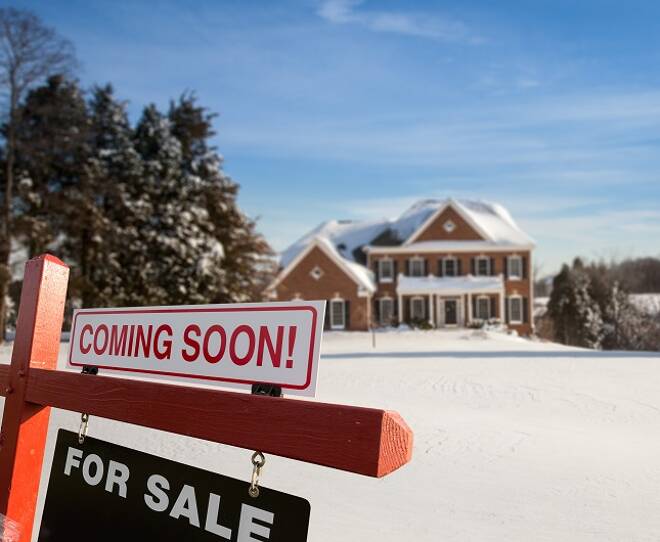Advertisement
Advertisement
U.S Mortgage Rates Fall to a 14th Record Low of the Year
By:
Mortgage rates fall to yet another record low. COVID-19 vaccine news could influence, with the outlook for interest rates weighing.
Mortgage rates fell to a 14th record low of the year, after having held steady in the previous week. In the week ending 3rd December, 30-year fixed rates slipped by 1 basis point to 2.71%.
From this time last year, 30-year fixed rates were down by 97 basis points.
30-year fixed rates were also down by 223 basis points since November 2018’s most recent peak of 4.94%.
Economic Data from the Week
Economic data was on the quieter side in the 1st half of the week.
The market’s preferred ISM Manufacturing and ADP nonfarm employment change figures for November were in focus.
The stats were negative, with the ISM Manufacturing PMI falling from 59.3 to 57.5. Labor market indicators also continued to flash red, with the ADP reporting just 307k nonfarm payroll jobs added in November. Economists had forecast a 410k rise in nonfarm payrolls.
Away from the economic calendar, progress towards a COVID-19 vaccine failed to support mortgage rates in the week. The FED’s outlook on close to zero interest rates weighed on mortgage rates, as mortgage and refinance applications continued to defy gravity.
Freddie Mac Rates
The weekly average rates for new mortgages as of 3rd December were quoted by Freddie Mac to be:
- 30-year fixed rates slipped by 1 basis point to 2.71% in the week. Rates were down from 3.68% from a year ago. The average fee remained steady at 0.7 points.
- 15-year fixed rates fell by 2 basis points to 2.26% in the week. Rates were down by 88 basis points from a year ago 3.14%. The average fee held steady at 0.6 points.
- 5-year fixed rates slumped by 30 basis points to 3.86% in the week. Rates were down by 53 points from last year’s 3.39%. The average fee held steady at 0.3 points.
According to Freddie Mac,
- Despite persistently low mortgage rates, home sales have hit a wall.
- A scarcity of inventories has put a limit on how much higher sales can increase.
- The record low supply, combined with strong demand, means that home prices are on a rapid rise, eroding the benefits of the low mortgage rate environment.
Mortgage Bankers’ Association Rates
For the week ending 27th November, rates were quoted to be:
- Average interest rates for 30-year fixed, backed by the FHA, increased from a survey low 2.99% to 3.00%. Points rose from 0.27 to 0.34 (incl. origination fee) for 80% LTV loans.
- Average interest rates for 30-year fixed with conforming loan balances remained unchanged at a survey low 2.92%. Points decreased from 0.35 to 0.31 (incl. origination fee) for 80% LTV loans.
- Average 30-year rates for jumbo loan balances increased from 3.18% to 3.19%. Points increased from 0.27 to 0.30 (incl. origination fee) for 80% LTV loans.
Weekly figures released by the Mortgage Bankers Association showed that the Market Composite Index, which is a measure of mortgage loan application volume, slipped by 0.6% in the week ending 27th November. In the week prior, the Index had increased by 3.9%.
The Refinance Index decreased by 5% and was 102% higher than the same week a year ago. In the week prior, the Index had increased by 5%.
The refinance share of mortgage activity fell from 71.1% to 69.5%. The share had risen from 69.8% to 71.1% in the week prior.
According to the MBA,
- Purchase applications were on the rise, while refinance applications declined.
- Purchase activity continued to show impressive year-on-year gains.
- There was also a significant rise in purchase loan amounts, which hit an average $375,000 last week, the highest since the survey began in 1990.
- Housing demand remains strong, and despite extremely tight inventory and rising prices, home sales are running at their strongest pace in over a decade.
- The low mortgage rate environment continues to spark borrower demand, and the mortgage industry is on target for its strongest year of originations since 2003.
For the week ahead
It’s a relatively quiet 1st half of the week on the U.S economic calendar.
Key stats include 3rd quarter nonfarm productivity and unit labor costs and October JOLTs job openings. With the market focus on U.S stimulus talks on Capitol Hill and COVID-19 vaccine news updates, the stats would likely have a muted impact on yields.
The key drivers in the week will likely be COVID-19 vaccine production projections and the FDA’s decision on Pfizer Inc. and Moderna Inc.’s vaccines.
Expect a jump in demand for riskier assets and U.S Treasury yields if lawmakers pass a COVID-19 stimulus package.
About the Author
Bob Masonauthor
With over 28 years of experience in the financial industry, Bob has worked with various global rating agencies and multinational banks. Currently he is covering currencies, commodities, alternative asset classes and global equities, focusing mostly on European and Asian markets.
Advertisement
